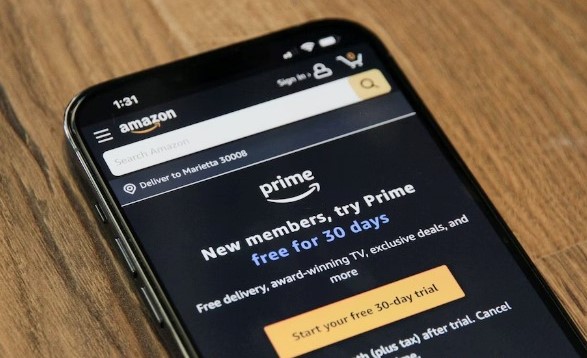The digital age provided industries with a unique opportunity to sell their products on a subscription basis. It is mainly about streaming services, software and apps, gaming, online news and magazines, e-learning, and cloud storage. Of course, the subscription-based model is very convenient for customers, which is why it is so widespread today. But recently, more and more people have begun to cancel their subscriptions. And this article will tell you why.
Contents
- Changing Needs or Circumstances
- Lack of Value
- Unwanted Auto-Renewals
- Poor Customer Experience
- Billing and Pricing Issues
- Competitive Offerings
- Lack of Content or Product Updates
- Negative Customer Feedback
- Subscription Fatigue
- No Flexibility
- Ineffective Marketing and Communication
- Unwanted Email or Communication Overload
- Data Privacy Concerns
- Conclusion
Changing Needs or Circumstances
It’s no secret that people’s needs and desires can change over time. What once ideally suited a customer’s needs may no longer be relevant or necessary today. For example, a client may cancel a fitness subscription because they have moved to a local gym or found a new workout regimen that suits them better. Similarly, financial hardship, a move, or a lifestyle change can affect a person’s decision to cancel a subscription.
Lack of Value
Unfortunately, one of the main reasons customers unsubscribe is a feeling of lack of value. When people feel that the service they are paying for is not meeting their expectations or no longer providing enough benefits, they may stop subscribing. It can happen when they find cheaper alternatives or understand they can achieve their goals without the subscription service. In this case, the company should take the time to improve its product.
Unwanted Auto-Renewals

There is nothing more simultaneously convenient and annoying about subscription services than their automatic renewal feature. A person is automatically charged for the next billing cycle unless they manually cancel the subscription. And while this may be convenient for some customers, others may forget to cancel the subscription before the renewal date.
Moreover, it can lead to customer dissatisfaction and encourage them to abandon the service for a long time. And here, we should also say about the limited trial period used to attract new customers. However, if the trial period is too short or does not give users enough opportunity to evaluate the service, they may not fully understand its value. In such cases, they may unsubscribe before entering into a long-term agreement.
Poor Customer Experience
These can be difficulties accessing or navigating the service, long response times to customer inquiries, or inadequate technical support. If users often encounter problems that tech support could be faster to solve, they may become frustrated and unsubscribe. It is especially true when the issues are related to payments: the users do not understand what they are paying for, encounter errors when trying to complete the transaction, can’t find the payment info, etc. One of the most common reasons people to turn to expert help online is the inability to resolve payment issues, confirm experts from the Howly consulting service. That is why such problems should be found and fixed on the product side.
Billing and Pricing Issues
Billing and pricing issues can significantly affect the customer’s perception of the subscription service. Hidden fees, unexpected price increases, complicated billing processes, or difficulty canceling subscriptions can lead to frustration and loss of trust. And as a result, this leads to customers unsubscribing due to a lack of transparency about the costs associated with the service.
Competitive Offerings
The growth of subscription services has led to intense competition among providers. As a result, customers very often get new options and alternatives. If a competitor offers a similar service at a lower price or with additional features, people may switch to another service or drop their current subscription.
Therefore, companies must constantly innovate and differentiate their offerings to keep up with the competition. If a service can’t offer unique features, benefits, or experiences that differentiate it from others, clients may perceive it as interchangeable with other options.
Lack of Content or Product Updates
The lack of fresh and engaging updates can lead to customer dissatisfaction with subscription services that provide regular content or products. Customers who stop receiving new or valuable content may perceive the service as stagnant and cancel their subscriptions.
Negative Customer Feedback
In the age of social media and online reviews, customer opinions carry significant weight. For example, negative comments or adverse experiences passed on by word of mouth from friends or relatives can influence a customer’s decision to unsubscribe. Therefore, maintaining a positive reputation and addressing customer concerns promptly and effectively is essential to customer retention.
Subscription Fatigue
The sheer number of subscription services available today can lead to what is known as “subscription fatigue.” Customers may find that they are subscribed to many apps, leading to feelings of overwhelm and a desire to simplify their lives and cut costs, including subscribing to a service that no longer interests them.
No Flexibility
Flexibility is a critical factor for many users when choosing a subscription. For example, suppose a service lacks flexible options, such as upgrading or downgrading plans, suspending subscriptions, or adjusting billing cycles. In that case, clients may feel like they are being pushed into a rigid framework. Without the ability to adapt their subscriptions to their changing needs, people may abandon the service and look for more flexible alternatives.
Ineffective Marketing and Communication
Clear and effective communication is vital to maintaining a healthy customer-supplier relationship. If clients don’t get enough information about updates, new features, or changes to the subscription service, they may lose interest in it. Likewise, poor marketing efforts not emphasizing the benefits of subscriptions can also contribute to canceling.
Unwanted Email or Communication Overload
While communication is essential, bombarding customers with fewer emails or notifications can have the opposite effect. Users overwhelmed by constant promotional emails or messages that don’t match their interests may perceive the subscription service as intrusive and cancel it.
Data Privacy Concerns
In an era where data privacy and security are significant concerns, customers are increasingly cautious about providing personal information. If the subscription service does not prioritize data protection or there is a security breach, people may lose trust and decide to cancel their subscriptions.
Conclusion
As you can see, customers can cancel their subscriptions for many reasons, some of which are not the business’s fault. For example, it is when a person’s priorities change or new circumstances arise. However, users may often unsubscribe when payments in the service or app are not transparent or have frequent technical difficulties.
As a result, it leads to a poor customer experience, which can be highly detrimental to the entire business. However, understanding and actively addressing the factors outlined in this article will help companies increase customer satisfaction, improve retention rates and build long-term loyalty in an ever-evolving subscription economy.



